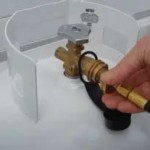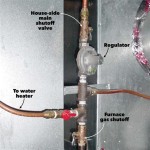Choosing the Best Fireplace Screen: A Comprehensive Guide
A fireplace screen is an essential accessory for any wood-burning fireplace. It serves multiple purposes, primarily providing safety by preventing sparks and embers from escaping the firebox and potentially causing fires. Beyond safety, a fireplace screen can also enhance the aesthetic appeal of the hearth, complementing the room's décor and adding a touch of elegance. Selecting the best fireplace screen involves considering various factors, including the screen's design, materials, size, and safety features.
This article will explore the critical aspects to consider when choosing a fireplace screen, ensuring a safe and stylish addition to your home. Understanding these factors will help you make an informed decision, selecting a screen that effectively protects your home and enhances your fireplace's visual appeal.
Understanding Types of Fireplace Screens
Fireplace screens are available in various designs, each offering unique benefits and aesthetic qualities. The most common types include single-panel, three-panel, and freestanding screens, as well as door-style screens and those with unique features such as added storage or decorative elements.
Single-Panel Screens: These are the simplest type of fireplace screen, consisting of a single, flat panel of mesh or metal. They are easy to install and move, making them a convenient choice for smaller fireplaces or those seeking a minimalist aesthetic. Single-panel screens are typically less expensive than other types, making them a budget-friendly option. However, they may offer less coverage and stability compared to multi-panel screens.
Three-Panel Screens: These screens consist of a central panel and two side panels that can be adjusted to fit the width of the fireplace opening. The adjustable side panels provide increased stability and coverage, making them suitable for a wider range of fireplace sizes. Three-panel screens are often more decorative than single-panel screens, featuring intricate designs and finishes. The flexibility of the side panels also allows for easier access to the firebox for tending the fire.
Freestanding Screens: Freestanding screens are designed to stand independently without needing to be mounted or attached to the fireplace. They often feature sturdy bases or legs that provide stability. Freestanding screens are a good option for fireplaces that lack a suitable mounting surface or for those who prefer a more portable screen. They are available in a variety of styles and materials, ranging from traditional wrought iron to modern glass designs. The portability of freestanding screens can be advantageous for cleaning or rearranging furniture.
Door-Style Screens: Door-style screens feature hinged doors that allow for easy access to the firebox without having to move the entire screen. This is particularly convenient for adding wood or tending to the fire. Door-style screens often provide a more secure barrier against sparks and embers, as the doors can be closed tightly. They are typically more expensive than other types of screens but offer added convenience and safety. The doors often feature handles for easy opening and closing, and some models include latching mechanisms for added security.
Specialty Screens: Beyond the standard types, specialty fireplace screens offer unique features or designs. Some screens incorporate storage for firewood or tools, while others feature decorative elements such as intricate metalwork, glass panels, or even built-in lighting. Corner fireplace screens are specifically designed to fit the unusual angles of corner fireplaces. Choosing a specialty screen allows for customization to specific needs and preferences, adding both functionality and style to the hearth.
Material Considerations: Durability and Aesthetics
The material of a fireplace screen significantly impacts its durability, heat resistance, and overall aesthetic. Common materials include steel, wrought iron, brass, and stainless steel, each offering distinct advantages and disadvantages.
Steel Screens: Steel is a popular choice for fireplace screens due to its strength and durability. Steel screens are typically coated with a heat-resistant finish to prevent rusting and corrosion. They are available in a variety of styles, from simple and functional to more decorative designs. Steel provides good protection against sparks and embers and can withstand high temperatures. The cost of steel screens is generally moderate, making them a good balance of quality and affordability.
Wrought Iron Screens: Wrought iron is known for its classic and elegant appearance. Wrought iron screens often feature intricate designs and handcrafted details, adding a touch of sophistication to the hearth. Wrought iron is a durable material that can withstand high temperatures and resist warping. However, it can be more expensive than steel and may require regular maintenance to prevent rusting. Applying a rust-resistant coating can help prolong the life of a wrought iron screen.
Brass Screens: Brass screens offer a warm and luxurious aesthetic. Brass is a naturally corrosion-resistant metal, making it a good choice for fireplace screens. Brass screens are often used in traditional or formal settings. However, brass can be more expensive than steel or wrought iron and may require polishing to maintain its shine. Over time, brass can develop a patina, which some prefer for its antique look.
Stainless Steel Screens: Stainless steel is a highly durable and corrosion-resistant material, making it an excellent choice for fireplace screens. Stainless steel screens are often used in contemporary or modern settings. They are available in a variety of finishes, from brushed to polished. Stainless steel is generally more expensive than steel but offers superior durability and resistance to rust. Its sleek and modern appearance complements a wide range of décor styles.
Mesh Screens: The mesh material used in fireplace screens is crucial for preventing sparks and embers from escaping. Steel mesh is a common choice due to its strength and heat resistance. The mesh should be fine enough to effectively block sparks but allow for adequate airflow to the fire. Some screens feature multiple layers of mesh for added protection. Regular cleaning of the mesh is important to remove soot and ash buildup, which can reduce airflow and increase the risk of fire.
Safety Features and Considerations
Safety is the most critical consideration when choosing a fireplace screen. The screen should effectively prevent sparks and embers from escaping the firebox, reducing the risk of fire. Key safety features include a sturdy construction, proper mesh size, and secure attachment mechanisms.
Spark Protection: The primary function of a fireplace screen is to prevent sparks and embers from escaping the firebox. The mesh material should be fine enough to effectively block sparks without hindering airflow to the fire. Regularly inspect the mesh for any holes or damage, and repair or replace the screen if necessary. Consider a screen with multiple layers of mesh for added protection, especially if you frequently burn dry or resinous wood that produces more sparks.
Stability and Construction: A stable and well-constructed fireplace screen is essential for safety. The screen should be able to stand securely without tipping over, even if bumped or jostled. Look for screens with sturdy legs or bases that provide adequate support. The frame of the screen should be made of durable materials that can withstand high temperatures and resist warping. Avoid screens that feel flimsy or unstable, as they may not provide adequate protection.
Attachment Mechanisms: For added security, consider a fireplace screen that can be attached to the fireplace using brackets or anchors. This is particularly important for homes with children or pets, as it prevents the screen from being accidentally knocked over. Ensure that the attachment mechanisms are easy to install and remove for cleaning or maintenance. Some screens feature magnetic closures that keep the doors securely shut, further preventing sparks from escaping.
Heat Resistance: The materials used in a fireplace screen should be able to withstand high temperatures without warping or melting. Steel, wrought iron, and stainless steel are all good choices for their heat resistance. Avoid screens made of materials that are not designed for high temperatures, such as plastic or wood. Check the manufacturer's specifications for the maximum temperature rating of the screen to ensure it is suitable for your fireplace.
Proper Sizing: Selecting the correct size fireplace screen is crucial for both safety and aesthetics. The screen should completely cover the fireplace opening, with at least a few inches of overlap on all sides. Measure the width and height of the fireplace opening carefully, and choose a screen that is slightly larger. If the screen is too small, sparks and embers may escape through the gaps. If the screen is too large, it may look awkward and block airflow to the fire.
Child and Pet Safety: If you have children or pets, consider a fireplace screen with features that enhance their safety. Door-style screens with latching mechanisms prevent access to the firebox, reducing the risk of burns. Screens with sturdy bases or attachment mechanisms prevent tipping, protecting children and pets from injury. Teach children about the dangers of fire and the importance of staying away from the fireplace.
By carefully considering these safety features, you can choose a fireplace screen that effectively protects your home and family from the dangers of fire. Regular maintenance and inspection of the screen are also important to ensure its continued safety and effectiveness.
Ultimately, the best fireplace screen is one that combines safety, durability, and aesthetic appeal. By considering the different types of screens, materials, and safety features, it becomes possible to make an informed decision, selecting a screen that effectively protects the home and enhances the enjoyment of the fireplace.

Best Fireplace Screens

12 Best Freestanding Fireplace Screens 2024

9 Best Fireplace Screens 2024 Guide Reviewed By Bob Vila

The Best Fireplace Screens For Your Chimney Vertical Care

20 Best Fireplace Accessories And Tools Industrial Screens

7 Best Fireplace Screens Of 2024

12 Best Fireplace Screens For Safe Indoor Fires 2024

10 Most Popular Mesh Fireplace Screens For 2024 The Jerum Post

9 Best Fireplace Screens 2024 Guide Reviewed By Bob Vila

12 Best Freestanding Fireplace Screens 2024








